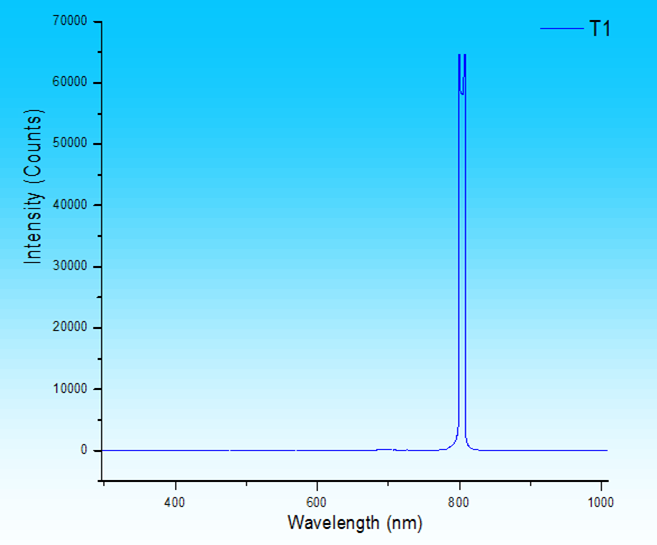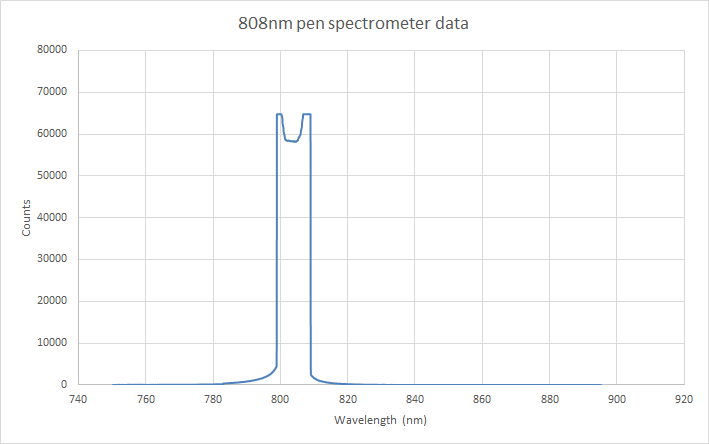mwang
0
- Joined
- Jan 10, 2013
- Messages
- 131
- Points
- 18
I was doing some spectrometer readings for my research samples and slipped in my laser...
Did a quick test on my 808nm ebay pen (power output 220 mW, multimode bar-shaped output). I took the lens off, and directly allow the laser output into the spectrometer from a few feet away to let the laser diverge and compensate for the power. So there is no effects from other optics, the light is directly traveling from the diode into the spectrometer. I didn't have time to set up an attenuator to lower the output even further, so I couldn't prevent it from maxing out the spectrometer around the peaks.
Here are the preliminary results:
Directly from the spectrometer:

Trimmed Excel graph:

There seems to be 2 peaks: an 808nm one (expected), and a 799nm one.
Is this common for these IR diodes?
Did a quick test on my 808nm ebay pen (power output 220 mW, multimode bar-shaped output). I took the lens off, and directly allow the laser output into the spectrometer from a few feet away to let the laser diverge and compensate for the power. So there is no effects from other optics, the light is directly traveling from the diode into the spectrometer. I didn't have time to set up an attenuator to lower the output even further, so I couldn't prevent it from maxing out the spectrometer around the peaks.
Here are the preliminary results:
Directly from the spectrometer:

Trimmed Excel graph:

There seems to be 2 peaks: an 808nm one (expected), and a 799nm one.
Is this common for these IR diodes?
Last edited:







